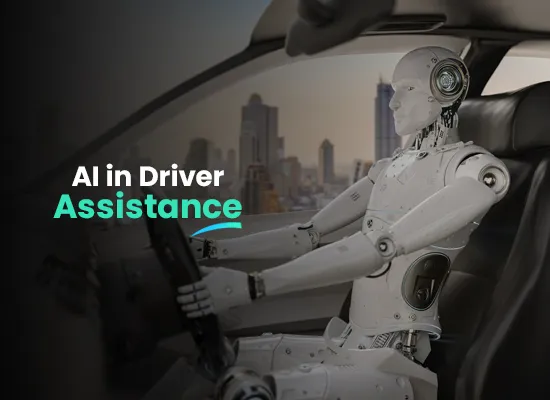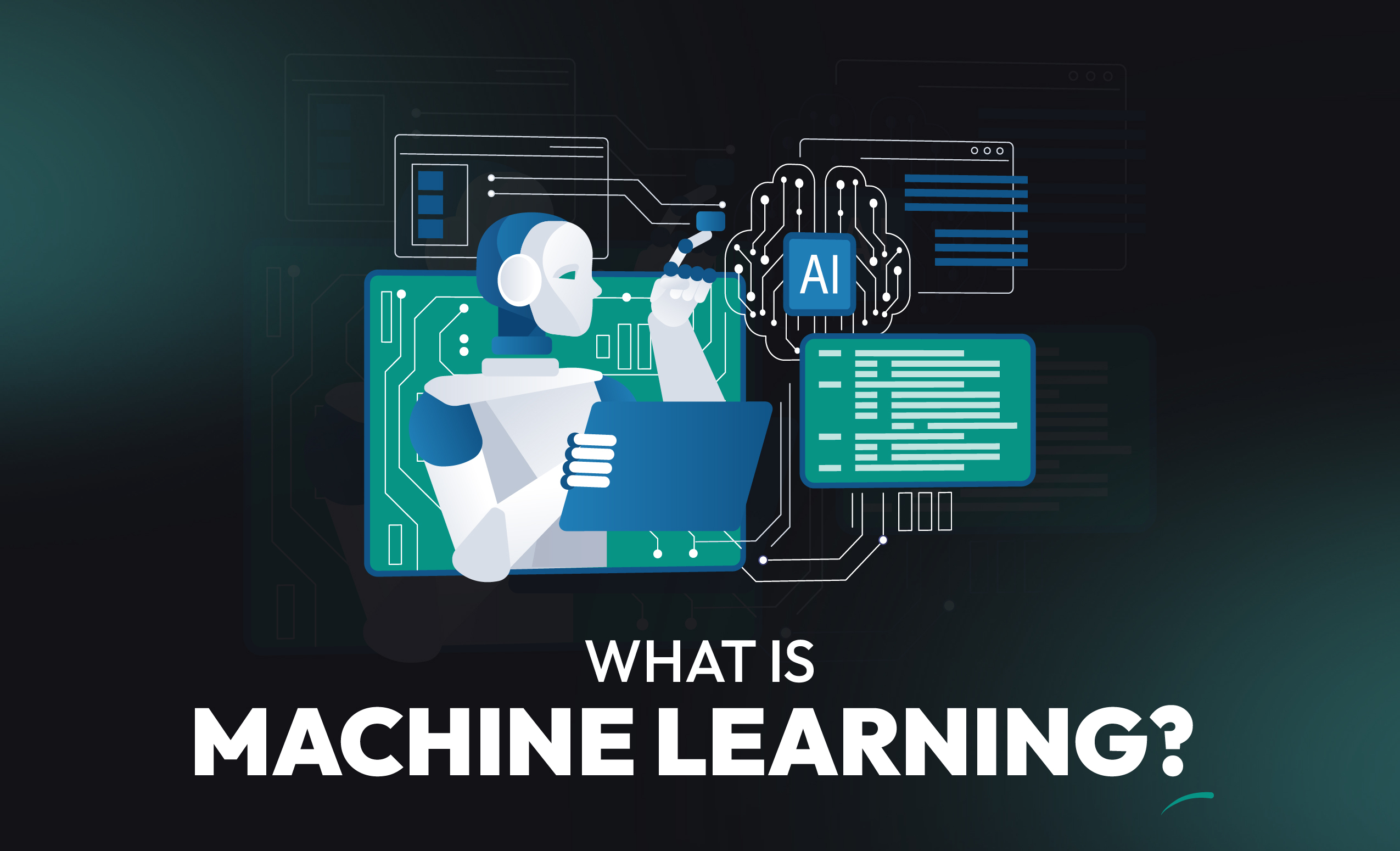
Contents
Driver assistance refers to technological features integrated into vehicles to enhance safety and convenience by assisting the driver in various tasks, such as collision avoidance, lane-keeping, adaptive cruise control, and parking assistance. These systems utilise sensors, cameras, and algorithms to provide real-time assistance and improve the overall driving experience.
AI in Driver Assistance:
Driving presents numerous challenges, including human error, distractions, fatigue, and unpredictable road conditions. Human drivers may overlook hazards, misjudge situations, or become impaired, leading to accidents. Additionally, traffic congestion and inefficient driving behaviours contribute to fuel consumption and environmental impacts.
Artificial intelligence (AI) holds significant potential to address these challenges and enhance safety and efficiency on the roads. AI-powered systems can analyse vast amounts of data from sensors, cameras, and other sources in real-time to detect and respond to potential hazards more effectively than human drivers. By leveraging machine learning algorithms, AI can continuously improve its ability to anticipate and adapt to various driving scenarios, minimising the risk of accidents.
Moreover, AI-driven technologies such as predictive analytics and traffic management systems can optimise traffic flow, reduce congestion, and enhance fuel efficiency by suggesting optimal routes and coordinating vehicle movements. Advanced driver assistance systems (ADAS) equipped with AI and Machine Learning development can assist drivers in making safer decisions, such as maintaining safe distances, staying within lanes, and avoiding collisions.

What is the Role of AI in Driver Assistance?
AI is playing an increasingly vital role in driver assistance, fundamentally transforming how we navigate the roads. These intelligent systems act as invisible co-pilots, constantly gathering and analysing data to enhance safety, comfort, and efficiency.
Imagine driving down the highway with AI-powered driver assistance features at your side. Sensors like cameras and radar scan the environment, feeding real-time information to AI algorithms. This allows for features like adaptive cruise control, which automatically adjusts your speed to maintain a safe distance from the car ahead, reducing fatigue and preventing accidents.
Driver assistance also extends beyond basic cruise control. AI can detect and alert you to potential hazards like lane departures, blind-spot objects, and even drowsy driving. Imagine a gentle nudge on the steering wheel reminding you to stay centred, or an audible alert warning you of a hidden motorcycle in your blind spot. These interventions can be lifesaving, making driver assistance a crucial tool for enhancing road safety.
Furthermore, AI is paving the way for more advanced driver assistance features. Imagine systems that anticipate traffic congestion and suggest alternative routes, or parking assistants that effortlessly guide your car into the tightest spaces. AI-powered driver assistance has the potential to revolutionise the driving experience, making it not only safer but also smoother and more enjoyable.
What are Advanced Driver Assistance Systems?
Imagine your car having an extra pair of eyes, a super-fast brain, and lightning-quick reflexes! That’s essentially what advanced driver assistance systems (ADAS) are. These high-tech features are like mini-guardian angels on wheels, constantly monitoring your surroundings and helping you navigate safely.
Think of advanced driver assistance systems as a suite of technologies working together. Sensors like cameras, radar, and LiDAR act as the eyes, scanning the road for potential hazards. This information is then processed by a powerful brain, which analyses the data in real-time to identify dangers like lane departures, approaching vehicles, or even pedestrians.
But advanced driver assistance systems don’t just observe; they also act! Based on the detected threats, these systems can issue warnings, alert you to blind spots, or even take corrective actions like applying brakes or adjusting steering. Think of it as having an invisible co-pilot, always watching your back and ready to step in when needed.
The beauty of advanced driver assistance systems lies in their ability to enhance safety and reduce human error, a major contributor to accidents. By providing constant support and vigilance, these systems can make driving a calmer, more confident experience for everyone on the road.
So, the next time you see a car with features like automatic emergency braking, lane departure warning, or adaptive cruise control, remember, it’s not just tech; it’s advanced driver assistance systems working their magic, making every journey safer and smoother.
Current Applications of AI in Driver Assistance:
Driving can be a complex task, requiring constant vigilance and quick reactions. But fear not! Advanced Driver Assistance Systems (ADAS) are here to lend a helping hand. These sophisticated technologies use sensors and cameras to monitor your surroundings and provide valuable assistance, enhancing safety and comfort behind the wheel. Let’s delve into three popular ADAS features:
Lane Departure Warning:
Imagine peacefully cruising down the highway when you unintentionally drift out of your lane. LDW uses cameras to detect lane markings andalerts you with an audible or visual signal, gently nudging you back on track before a potential mishap occurs. This vigilant guardian can be a lifesaver, especially during long journeys or moments of fatigue.
Automatic Emergency Braking:
Ever find yourself approaching a stopped vehicle too fast? AEB acts as a watchful co-pilot, using sensors to detect imminent collisions with cars or pedestrians ahead. If you don’t react in time, AEB automatically applies the brakes, potentially mitigating or even preventing an accident. This advanced safety net provides peace of mind, knowing you have an extra layer of protection.
Adaptive Cruise Control:
Long highway stretches can be monotonous, leading to fatigue and potential driver errors. ACC takes the reins, automatically adjusting your speed to maintain a safe distance from the car in front. It’s like having a personal cruise control assistant, allowing you to relax on the road while maintaining a safe distance.
These are just a few examples of the many advanced driver assistance systems available. By utilising these technologies, we can create a safer and more comfortable driving experience for everyone. So, the next time you get behind the wheel, remember that ADAS is there to support you, making your journey smoother, safer, and more enjoyable.
Let’s delve into specific car models showcasing ADAS:
Tesla Autopilot:
Long highway stretches can be monotonous, leading to fatigue and potential driver errors. ACC takes the reins, automatically adjusting your speed to maintain a safe distance from the car in front. It’s like having a personal cruise control assistant, allowing you to relax on the road while maintaining a safe distance.
Mercedes-Benz S-Class Driver Assistance Package:
This comprehensive package features AI-powered features like Active Lane Change Assist, which utilises AI algorithms to analyse surrounding traffic and suggest safe lane changes. Additionally, Active Emergency Braking with pedestrian detection leverages AI for real-time collision avoidance.
Honda Sensing Suite:
Standard on many Honda models, this suite employs AI in its Adaptive Cruise Control (ACC) system, allowing for smoother following distances and automatic stop-and-go functionality. Furthermore, Traffic Sign Recognition (TSR) utilises AI to identify and alert drivers to speed limits and other important road signs.
These are just a few examples, and the list of ADAS-equipped car models is constantly expanding. From automated parking systems that utilise AI for precise manoeuvres to driver monitoring systems that detect drowsiness, AI is weaving its way deeper into the driving experience.
However, it’s crucial to remember that ADAS are not meant to replace drivers. They are sophisticated tools to assist, not automate, driving. It’s vital to understand their limitations and remain engaged while utilising these systems.
Benefits of AI in Automotive Industry: A Safer, Smoother and More Accessible Future
The automotive industry is undergoing a revolutionary shift, powered by the immense potential of artificial intelligence (AI). This technology holds the key to unlocking significant benefits across various aspects of driving, from safety and efficiency to inclusivity and accessibility.
Benefits of AI in Automotive Industry: Enhanced Safety with AI-Powered Decision-Making
Imagine a car that anticipates dangers before you do. AI-powered systems, with their lightning-fast reflexes and ability to process vast amounts of data, can significantly reduce accidents and save lives. They can analyse the environment in real-time, react faster than humanly possible, and assist drivers in making critical decisions, preventing collisions, and minimising damage. This translates to safer roads for everyone and peace of mind behind the wheel.
Benefits of AI in Automotive Industry: Optimising Fuel Consumption and Reducing Traffic Congestion
Fuel efficiency and traffic congestion are major challenges in the automotive industry. AI steps in as a game-changer, offering benefits in both areas. AI-powered algorithms can optimise routes, suggest eco-friendly driving practices, and even predict traffic patterns, leading to smoother commutes and reduced fuel consumption. This not only benefits the environment but also saves drivers money and time stuck in traffic jams.
Benefits of AI in Automotive Industry: A Smoother Journey for Everyone
AI doesn’t just improve safety and efficiency; it also enhances the overall driving experience. Personalised infotainment systems, intuitive voice commands, and AI-powered navigation make driving more convenient and enjoyable. Additionally, AI-powered parking assistants and self-driving features can significantly reduce stress and fatigue, making long journeys more manageable.
Benefits of AI in Automotive Industry: Driving Without Limitations
The benefits of AI in the automotive industry extend to individuals with disabilities. AI-powered systems can assist drivers with physical limitations by providing features like adaptive cruise control, automatic braking, and lane departure warnings. These intelligent systems can act as virtual co-pilots, enhancing independence and mobility for those who might otherwise struggle behind the wheel.
The integration of AI into the automotive industry is not just a technological advancement; it’s a shift towards a safer, more efficient, and more inclusive future for transportation. From accident prevention to personalised driving experiences, the benefits of AI are paving the way for a revolution on the road, leaving a positive impact on individuals, society, and the environment alike.
Challenges and Considerations:
The rise of advanced driver assistance systems (ADAS) promises a safer and more efficient future for transportation. However, navigating this technological leap requires careful consideration of ethical implications. Here are three key issues that demand our attention:
Data Privacy:
ADAS rely heavily on personal data collected through sensors, cameras, and even driver behaviour. Balancing the benefits of using this data for safety improvements with the individual’s right to privacy is crucial. Can we anonymize data effectively? How long should it be stored? These questions require transparent and robust data privacy frameworks to ensure trust and prevent misuse.
Bias in Algorithms:
The algorithms powering ADAS are trained on massive datasets that can unconsciously reflect societal biases. Imagine a system that is more likely to misidentify pedestrians with darker skin tones. This can lead to discriminatory outcomes and perpetuate existing inequalities. We must actively identify and mitigate bias in algorithms to ensure fairness and inclusivity in ADAS technology.
Potential Job Displacement:
Automation is a double-edged sword. While ADAS can enhance safety and reduce human error, it also raises concerns about job displacement in the transportation sector. Truck drivers, taxi drivers, and even parking attendants might face job losses. We need proactive measures like retraining programmes and social safety nets to ensure a just transition for impacted workers.
Environmental Factors:
They further complicate the equation. Dust storms, fog, or sudden downpours can disrupt sensor performance, throwing a wrench into the delicate dance between perception and action. ADAS systems must be robust and adaptable, able to adjust their interpretations based on the prevailing conditions. Imagine a car mistaking a puddle reflection for an actual obstacle, slamming on the brakes unnecessarily – not exactly conducive to smooth or safe driving.
Reliable System Performance:
It is paramount for building trust in ADAS. Glitches, malfunctions, or unexpected behaviour can erode confidence and discourage drivers from fully embracing these technologies. Ensuring consistent and predictable operation requires rigorous testing across diverse scenarios, from bustling cityscapes to remote highways. Additionally, cybersecurity vulnerabilities must be addressed to prevent malicious actors from compromising the system and potentially causing harm.
Environmental Adaptability:
Overcoming these challenges is crucial for unlocking the full potential of ADAS. By ensuring sensor accuracy, and reliable system performance, we pave the way for a future where advanced driver assistance systems become not just features, but trusted partners on our journeys, making our roads safer and our driving experiences smoother. The road ahead may be challenging, but the rewards of a safer and more intelligent driving experience make it a journey worth taking.
The Future of AI in Driver Assistance:
The future of driving is paved with intelligent assistance. Imagine advanced driver assistance systems (ADAS) not just guiding your car but anticipating your needs. These sophisticated systems will evolve, learning from every mile driven and becoming proactive partners. Imagine ADAS seamlessly adjusting speed, braking for hazards, and even suggesting routes based on real-time traffic. Future roads will be safer, smoother, and smarter thanks to the ever-evolving power of advanced driver assistance systems. Buckle up; the future of driving is intelligent, and it’s arriving sooner than you think.
ADAS Evolution:
Advanced driver assistance systems (ADAS), powered by AI, are undergoing a revolution, transforming cars into intelligent assistants. From lane departure warnings to automatic emergency braking, AI is paving the way for a future with self-driving vehicles.
Ethical Crossroads:
As AI takes the wheel, ethical considerations arise. Who’s responsible for accidents? How do we ensure data privacy and prevent discrimination? Addressing these ethical questions is crucial for responsible development.
Personalised Driving:
AI can adapt to individual driving styles and preferences. Imagine ADAS that learns your favourite routes, adjusts braking based on your comfort level, or even recommends music based on your mood.
Connected Cars, Connected Future:
AI and ADAS will connect cars to each other and smart city infrastructure. Imagine vehicles communicating with traffic lights,optimising routes, and predicting congestion, leading to smoother, safer, and more efficient commutes.
Enhanced Safety:
AI-powered ADAS can perceive dangers faster and react more precisely than humans, reducing accidents and saving lives. Imagine a future where collisions are a rarity, not a daily tragedy.
Accessibility for All:
Self-driving cars powered by AI have the potential to revolutionise mobility for the elderly, disabled, and those without licences, granting them greater independence and freedom.
Data Dilemmas:
AI relies on data, and concerns about data privacy and security are paramount. Secure data handling and transparent algorithms are essential for building trust in self-driving technology.
Jobs and the Future:
The rise of self-driving cars raises concerns about job displacement. However, new opportunities will arise in areas like AI development, infrastructure management, and cybersecurity.
Regulatory Landscape:
Governments and regulators must develop clear frameworks for self-driving cars, addressing legal liability, safety standards, and ethical considerations.
A Collaborative Journey:
Building a future with self-driving cars requires collaboration between car manufacturers, tech companies, policymakers, and the public. By working together, we can ensure a responsible and ethical future for mobility.
Safety and Precautions While Embracing Advanced Driver Assistance Systems (ADAS):
While advanced driver assistance systems (ADAS) hold immense promise for revolutionising road safety, it’s crucial to remember that they are assistants, not replacements for responsible driving. Here are some key safety precautions to keep in mind:
Understand the Limitations:
Each ADAS feature has limitations. Cruise control might not react well to sudden stops, and lane-keeping assistance might not work in construction zones. Familiarise yourself with your specific system’s capabilities and limitations before relying on it completely.
Stay Alert and Engaged:
ADAS is not an excuse to zone out. Remain attentive to the road, traffic, and your surroundings at all times. Don’t use ADAS as a licence to multitask or engage in distracting activities behind the wheel.
Don’t Over-rely:
Over-reliance on ADAS can lead to complacency and a diminished awareness of potential hazards. Remember, you are ultimately responsible for the safe operation of your vehicle. Use ADAS as a supplement to your own driving skills, not a substitute.
Maintain Your Vehicle:
Ensure your vehicle’s sensors, cameras, and other ADAS components are properly calibrated and functioning optimally. Regular maintenance is essential for ADAS to perform as intended.
Heed Warnings:
Don’t ignore alerts and warnings from your ADAS system. They are designed to signal potential dangers and prompt you to take action. Ignoring these warnings can have serious consequences.
Adverse Weather:
ADAS performance can be affected by adverse weather conditions like fog, heavy rain, or snow. Adjust your driving accordingly, and be prepared to take manual control if necessary.
Be Aware of Others:
Not all vehicles have ADAS features. Be mindful of other drivers, cyclists, and pedestrians who might not anticipate your vehicle’s automated actions.
Continuous Learning:
ADAS technology is constantly evolving. Stay informed about new features, their limitations, and best practices for safe usage.
By following these safety precautions, you can leverage the benefits of advanced driver assistance systems while ensuring a safe and responsible driving experience for yourself and others on the road. Remember, ADAS is a valuable tool, but it’s up to you to use it wisely.

Conclusion:
Overall, AI has the potential to revolutionise driving by enhancing safety, efficiency, and the overall driving experience. However, challenges such as ethical considerations, regulatory frameworks, and the integration of AI with existing infrastructure need to be addressed to ensure the widespread adoption and successful implementation of AI-driven solutions on the roads.
While AI’s role in driver assistance is still evolving, its impact is undeniable. From basic safety features to advanced navigation tools, AI is transforming driving into a more secure and relaxed experience. As technology continues to advance, we can expect even more sophisticated driver assistance systems to emerge, making our roads safer and our commutes more enjoyable for everyone.
Addressing these challenges is vital for the responsible development and deployment of advanced driver assistance systems. Only through open dialogue, ethical considerations, and proactive solutions can we unlock the full potential of ADAS while mitigating potential harms. By ensuring data privacy, tackling algorithmic bias, and preparing for job displacement, we can navigate the ethical tightrope and build a safer, fairer, and more equitable future for transportation.
This journey with AI and ADAS promises a future where driving is safer, smarter, and more personalised. But navigating the ethical and societal challenges is key to unlocking the full potential of this transformative technology.

Author Bio
Read More Blogs

What is Machine Learning (ML)?

Better Prompts Needed – Midjourney V6 to the Rescue






















